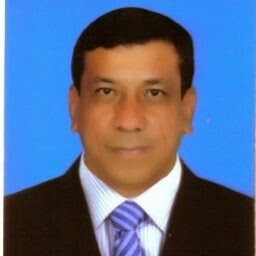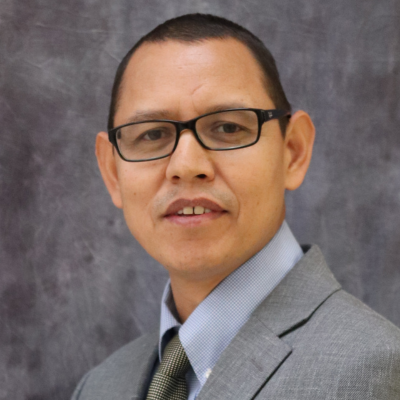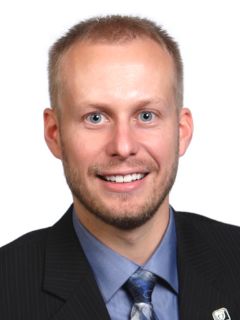
Date: Wed Jun 27, 2018
Time: 8:00 AM - 9:30 AM
Moderator: Milan Kroulik
In this paper we present a temporal correlation analysis of NDVI with with Growth and Yield Features of Rice Plants. A half ha experimental rice field was established south-west of Ibagué, Tolima, Colombia (4°22'54.192"N, 75°09'17.222"W. For the experimental design in the plot, four rows were established for nitrogen, three for phosphorous and three for potassium. For nitrogen, each row contained five treatments allocated randomly. The nitrogen treatments were defined as: T1= 0 kg/ha, T2= 50 kg/ha, T3= 100 kg/ha, T4= 150 kg/ha, and T5 = 200 kg/ha. For phosphorous and potassium, each row contained four treatments allocated randomly. The treatments were defined as: T1 = 0 kg/ha, T2 = 50 kg/ha, T3 = 100 kg/ha, T4 = 150 kg/ha. Each treatment block had a size of 36 m2approximately. The experimental plot was flew weekly, using a fixed wing UAV with a multispectral camera, from emergence to harvest; however, due to problems with the plane and weather, the days after emergence (DAE) the data could be collected were: 24, 38, 60, 66, 104, 111, 117, and 124. At the same time there were sampled in situ; plant height, number of tiller and panicles, and SPAD. The results show that NDVI is highly correlated with the amount of nitrogen in rice plant at the vegetative and reproductive stages, but is not for phosphorous and potassium. Furthermore, there exist a high correlation of NDVI with SPAD and plant height; contrary to number of tiller and panicles. However, more research has to be done to make final conclusions about the correlation between NDVI and growth features.

Crop coefficient (Kc)-based estimation of crop water consumption is one of the most commonly used methods for irrigation management. Spectral modeling of Kc is possible due to the high correlations between Kc and the crop phenologic development and spectral reflectance. In this study, cotton evapotranspiration was measured in the field using several methods, including eddy covariance, surface renewal, and heat pulse. Kc was estimated as the ratio between reference evapotranspiration and the measured cotton evapotranspiration. In addition, a time series of Sentinel-2 imagery was processed to produce 22 vegetation indices (VIs) based on the sensor’s unique spectral bands. Empirical Kc – VI models were derived and ranked according to their prediction error. In accordance with previous studies, we found a strong correlation between the normalized difference vegetation index (NDVI) and Kc (R2 = 0.94), and yet, we also identified other spectral indices that are more strongly correlated to Kc. The indices that were found to be the most suitable for Kc prediction were based on the red and red-edge bands (MTCI, REP, and S2REP). This progress in estimating cotton water consumption using satellite imagery that are available at no cost is a leap forward towards the development of crop irrigation requirements models. Consequently, this work sets the scene for near-real-time irrigation decision support systems.
The overall objective of this project was to preliminarily assess the use of UAV-based thermal imagery to sense harvest-related factors. Results suggested that thermal imagery can be used to detect areas of high grain moisture content late in the harvest season. Time periods closer to physiological maturity were less likely to show significant differences in thermal imagery data. Additional research is needed to determine if moisture content trends with other measurable quantities such as vegetative indices or green color intensity.
Bird predation is a significant problem in high-value fruit crops, such as apples, cherries, blueberries, and wine grapes. Conventional methods such as netting, falconry, auditory scaring devices, lethal shooting, and visual scare devices are reported to be ineffective, costly, and/or difficult to manage. Therefore, farmers are in need of more effective and affordable bird control methods. In this study, two UAS wasused as a bird-deterring agent in a commercial vineyard. The experimental design consisted of six days of UAS flights and eight days of control observation (no UAS flight) alternated in an interval of two days, for a total of a 14-day experiment. On each of the flight days, a Matrice M600 Pro was flown over the field for approximately five hours supported by Phantom 3 Standard during the battery swapping of Matrice M600 Pro. Birds flying in and out of the field along the edges of the field were recorded using two different GoPro Hero 5 cameras. It was found that there wasa significantlylower number of birds during the UAS cycles compared to those during the control cycles.

Using Field spectroscopy for detecting soil properties for Site Specific Management in arid region
Abdelaziz A. Belala, Abdelraouf M. Alia,
aNational Authority for Remote Sensing and Space Sciences (NARSS), Cairo, Egypt
belalabd@gmail.com
Abstract: In recent years, Precision Farming (PF) is a new trend for developing the agriculture processes to increase the productivity of crops with saving efforts and costs. Site Specific Management (SSM) is considered as an important factor of PF application. SSM depends on the accuracy of assessment of soil characteristics which is used for managing sustainable soil functions. SSM assessment has numerous applications for managing sustainable soil function. Field spectroscopy is a modern tool for studying soil and crop characteristics. The main objectives of this paper was to studied the relationships between physiochemical soil properties and field spectroscopy and the relationships between wheat yield and soil fertility. This aim was achieved by select one pivot in Six October company with an area 63 hectares, East Nile Delta, Egypt, 20 surface soil samples were collected and produce multiple linear regression model (MLR) between physiochemical soil properties and field spectrometer as well as MLR between wheat yield data and soil fertility in the study area. In this status, 20 physiochemical soil properties were used to did these relationships and seven soil fertility were used to did the relationships with wheat crop yield. Many statistical procedures, including a principal component analysis (PCA), multiple linear regression model (MLR), were used. Correlation co-efficient between actual and predicted between physiochemical soil properties (Sand, Silt, Clay, pH, ECe, CaCO3, N, P, K, Ca++, Na+, Mg++, K+, Cl-, HCO3-, SO4=, Mn, Zn, Cu, and Fe) and spectroscopy data of coefficient of determination (R2) were R2 = 0. 0.88, 0.27, 0.75, 0.87, 0.72, 0.93, 0.39, 0.8, 0.10, 0.71, 0.17, 0.79, 0.66, 0.79, 0.78, 0.78, 0.76, 0.90, 0.87 respectively. On the hand Correlation co-efficient between actual and predicted between wheat crop yield and soil fertility (N, P, K , Mn, Zn, Cu, and Fe) were (R2)= 0.914, 0.799,and 0.948 respectively. It is complemented that the VIS-NIR-SWIR spectroscopy study can be effectively tool for studied soil properties. Also, MLR is a good tool for detecting the relationships between crop yield and soil properties.
Keywords: Remote Sensing, SSM, Spectroscopy, MLR, Soil properties, Wheat yield

Ground sensing is the key task in harvesting head control system. Real time sensing of field topography under vegetation canopy is very challenging task in wild blueberry cropping system. This paper presents the design of an ultra-wide band RADAR sensing, scanning device to recognize the soil surface level under the canopy structure. Requirements for software and hardware were considered to determine the usability of the ultra-wide band RADAR system.An automated head elevation sensing system is developed and tested in wild blueberry fields. The developed system consisted of ultra wide band RADAR system customized to cover the width of the harvester head, a real-time kinematics global positioning system (RTK-GPS), custom built software for analyzing the electromagnetic waves, and a single board computer. The custom software acquired and processed the RADAR sensing data in real-time by using Fast Fourier Transform technique. Two wild blueberry fields were selected in central Nova Scotia to evaluate the performance of the developed system. One-hundred four experimental plots were randomly constructed within two fields and ground level were recorded manually and compared with RADAR sensed data to evaluate the accuracy of the developed system. Results of regression and scatter plots revealed that the proposed system was able to sense the ground level in real-time. The test results showed the potential of applying such system on working harvesters.

